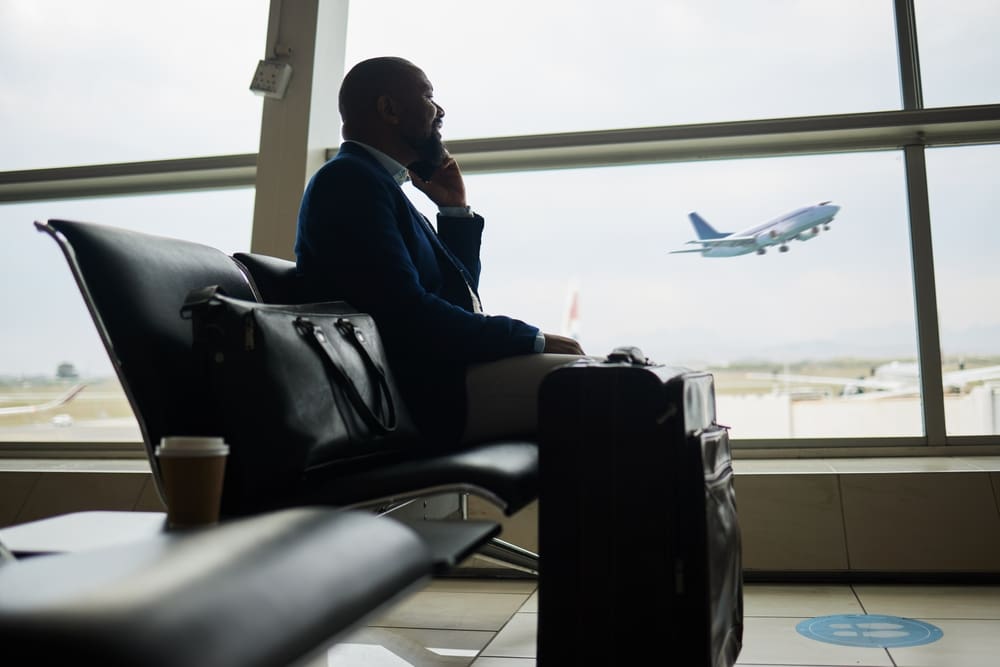Traveling by air is a modern marvel that enables us to traverse vast distances in mere hours, a feat that once took our ancestors days, if not months, to accomplish. The experience of flying — with its unique blend of anticipation and exhilaration — opens up a world of possibilities by connecting us to far-flung destinations and diverse cultures. However, this incredible convenience comes with its own set of challenges, particularly for our physical health.
As passengers, we are often confined to the limited space of our airplane seats, a situation that can extend for several hours or even longer on international flights. This prolonged period of immobility can lead to discomfort and health issues, ranging from minor annoyances to more serious conditions. It’s in this context that stretching while flying transforms from a mere recommendation to an essential practice for safeguarding our well-being.
Incorporating stretches into your flight routine is not just about alleviating immediate discomfort; it’s about making a proactive choice for your health and comfort. Engaging in even simple stretching exercises can significantly mitigate the negative impacts of long-haul flights, ensuring that you arrive at your destination not just physically intact but also refreshed and ready to embark on your journey. Let’s delve into why making stretching an integral part of your air travel experience is crucial for maintaining your health and enhancing your overall flight experience.
Enhances circulation
Improved blood flow: Sitting in a cramped position for an extended period can impede blood flow, especially to your lower extremities. Stretching activates your muscles, encouraging blood to move more freely throughout your body. This improved circulation can prevent the feeling of pins and needles in your legs and reduce the risk of deep vein thrombosis (DVT), a serious condition where blood clots form in the deep veins of your legs.
Reduces muscle stiffness and soreness
Alleviating discomfort: Long flights can lead to muscle stiffness and soreness, making your journey uncomfortable. By stretching, you can relieve tension in your muscles, particularly in areas like your back, neck and shoulders, which often bear the brunt of poor posture. Regular stretching helps to keep the muscles flexible, ensuring that you arrive at your destination more relaxed and pain-free.
Lowers stress levels
Mental and physical relaxation: The act of stretching has been shown to lower stress levels, which is particularly beneficial during the sometimes anxious experience of flying. Engaging in gentle stretches can release tension not only in the body but also in the mind, promoting a state of relaxation. This can enhance your overall flight experience, making it more pleasant and less taxing on your mental health.
Prevents joint pain
Maintaining joint health: Joints can become stiff and painful after being in a static position for too long. Stretching helps to lubricate the joints, reducing discomfort and the risk of joint-related issues. By moving and stretching regularly, you encourage a healthier range of motion, which can prevent the aches and pains associated with long-haul flights.
Boosts energy levels
Revitalization: Air travel can be draining, leaving you feeling lethargic upon arrival. Stretching can invigorate your body by increasing blood flow and oxygen supply, effectively boosting your energy levels. This can be particularly beneficial for travelers who have activities planned shortly after landing or for those who need to combat jet lag.
Implementing stretching into your flight routine
Incorporating stretching into your flight routine doesn’t require much space or effort. Simple stretches like rotating your ankles, stretching your arms overhead, or gently twisting your torso can make a substantial difference. Airlines often provide in-flight magazines with suggested stretches, or you can prepare a short routine beforehand.
Safety and courtesy: Always be mindful of your fellow passengers and the flight crew. Ensure that your stretching does not disturb others and follow any instructions from the crew regarding safety.
Prioritizing health for a better flight experience
In the confined environment of an airplane, where space is limited and movement restricted, the importance of stretching becomes ever more apparent. Such a simple act is not just a preventive measure against various health issues but a crucial component of a healthy travel routine. Conditions like deep vein thrombosis, muscle stiffness and joint pain — which can transform a routine flight into a painful ordeal — are significantly mitigated through the practice of regular stretching. Moreover, the benefits extend beyond mere physical wellness. Stretching serves as a powerful tool in stress reduction, offering mental relief that can transform a cramped flight into a more peaceful journey.
The enhanced circulation and energy levels resulting from these stretching exercises ensure that you not only endure the flight but also enjoy it. This proactive approach to travel health enables passengers to disembark not as weary travelers but as adventurers ready to embrace their new surroundings with vigor and enthusiasm.
In essence, the secret to a fulfilling flight experience lies in recognizing and catering to our body’s needs. Staying active with stretching, maintaining hydration and practicing mindfulness about our physical state are key elements. As we take to the skies, let’s commit to prioritizing our health, ensuring that our adventures begin the moment we step on the plane. Safe travels and happy stretching!
This story was created using AI technology.
















